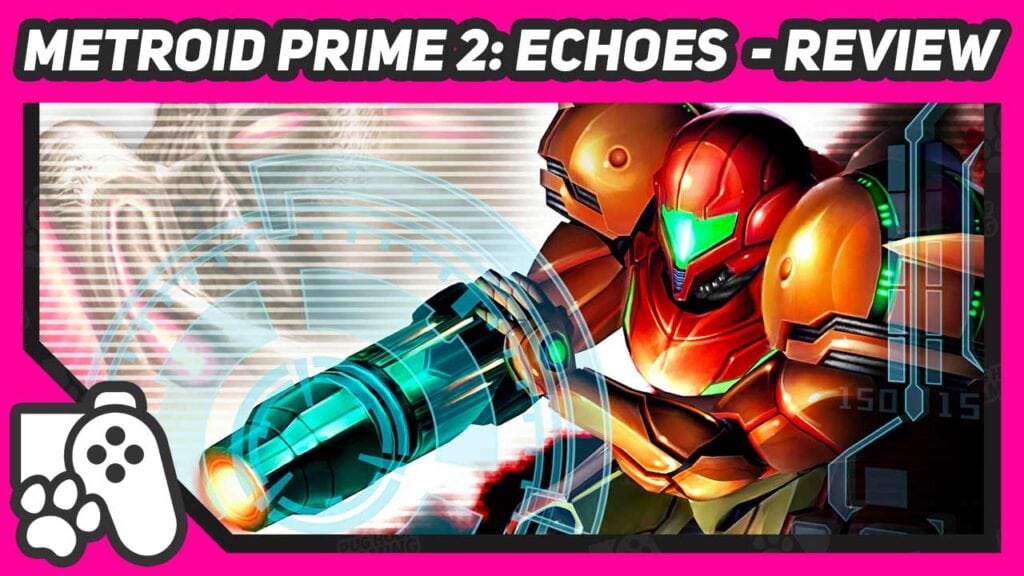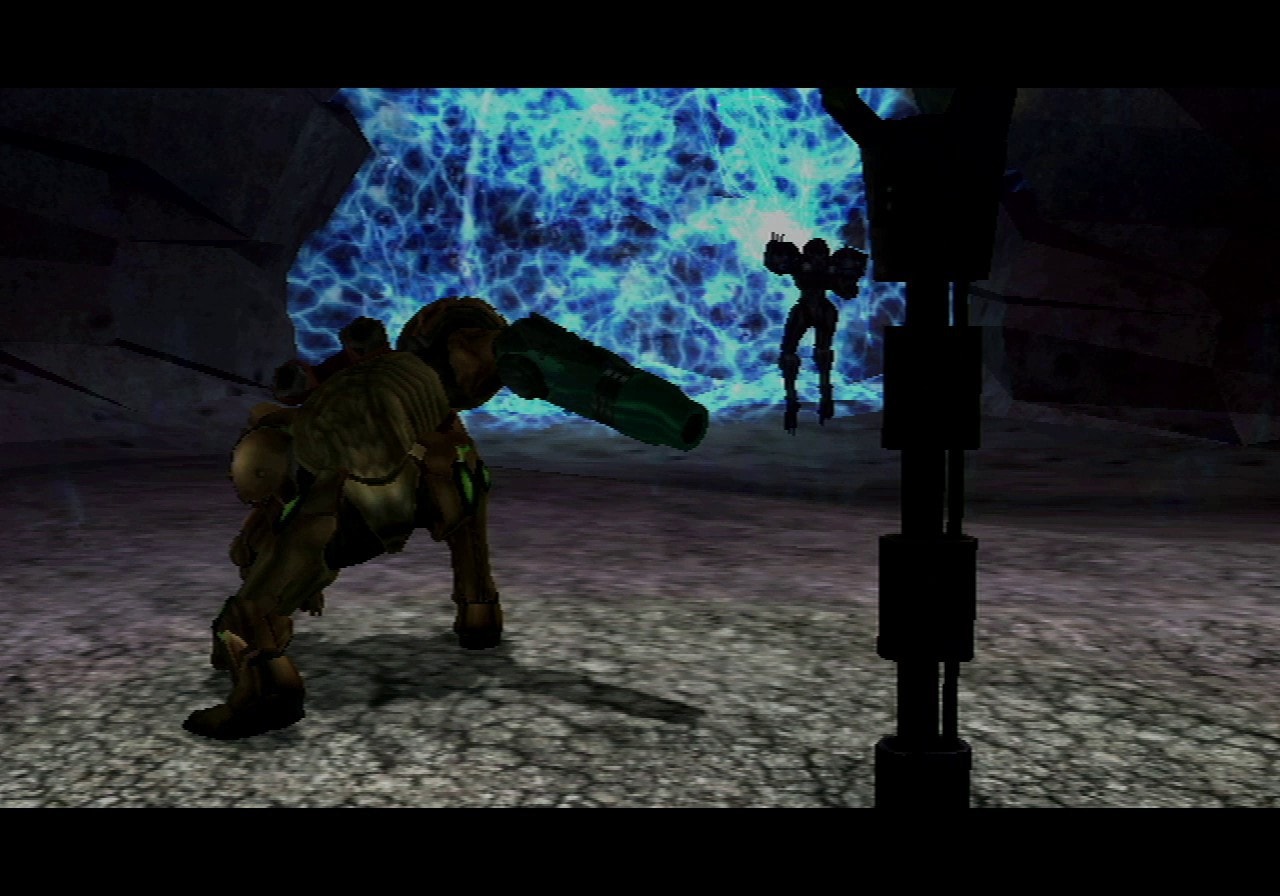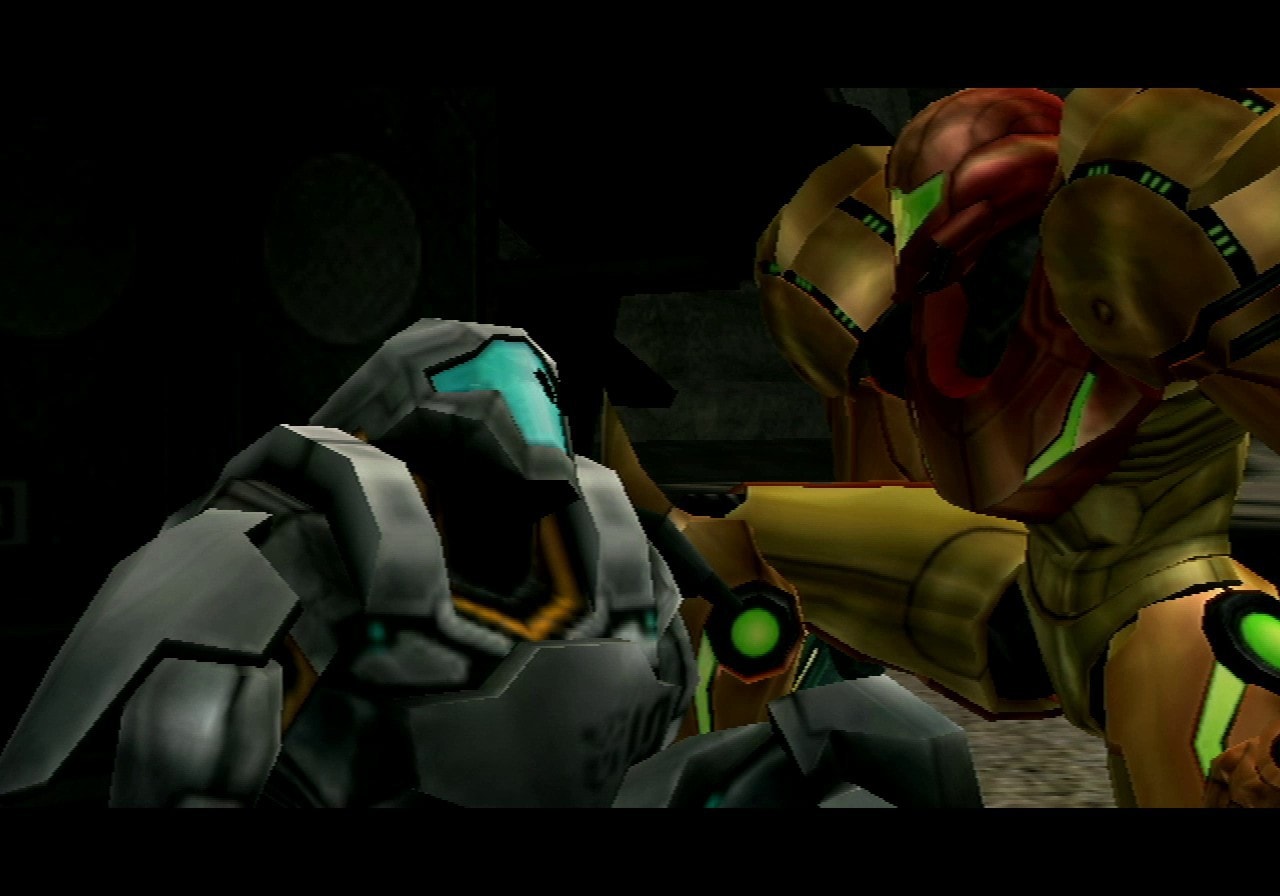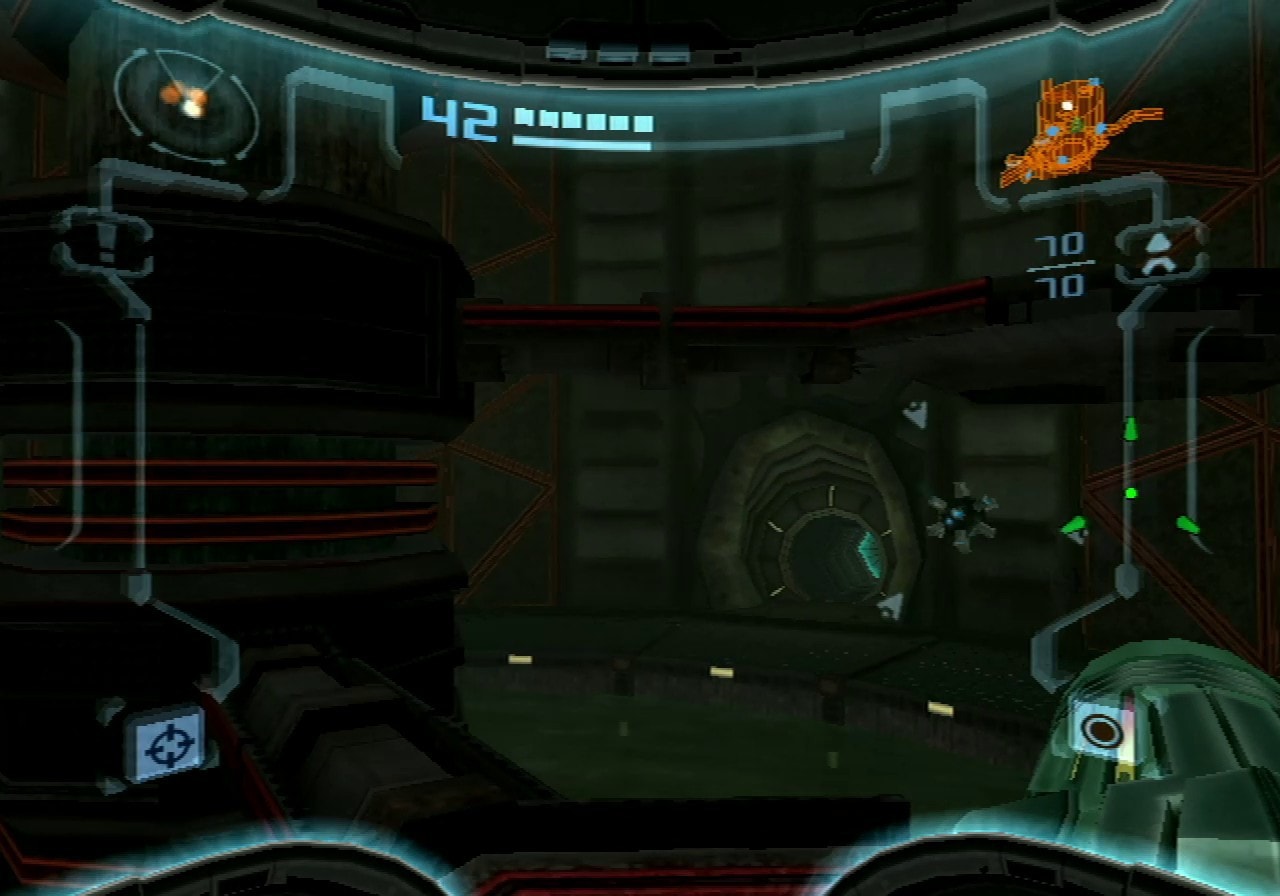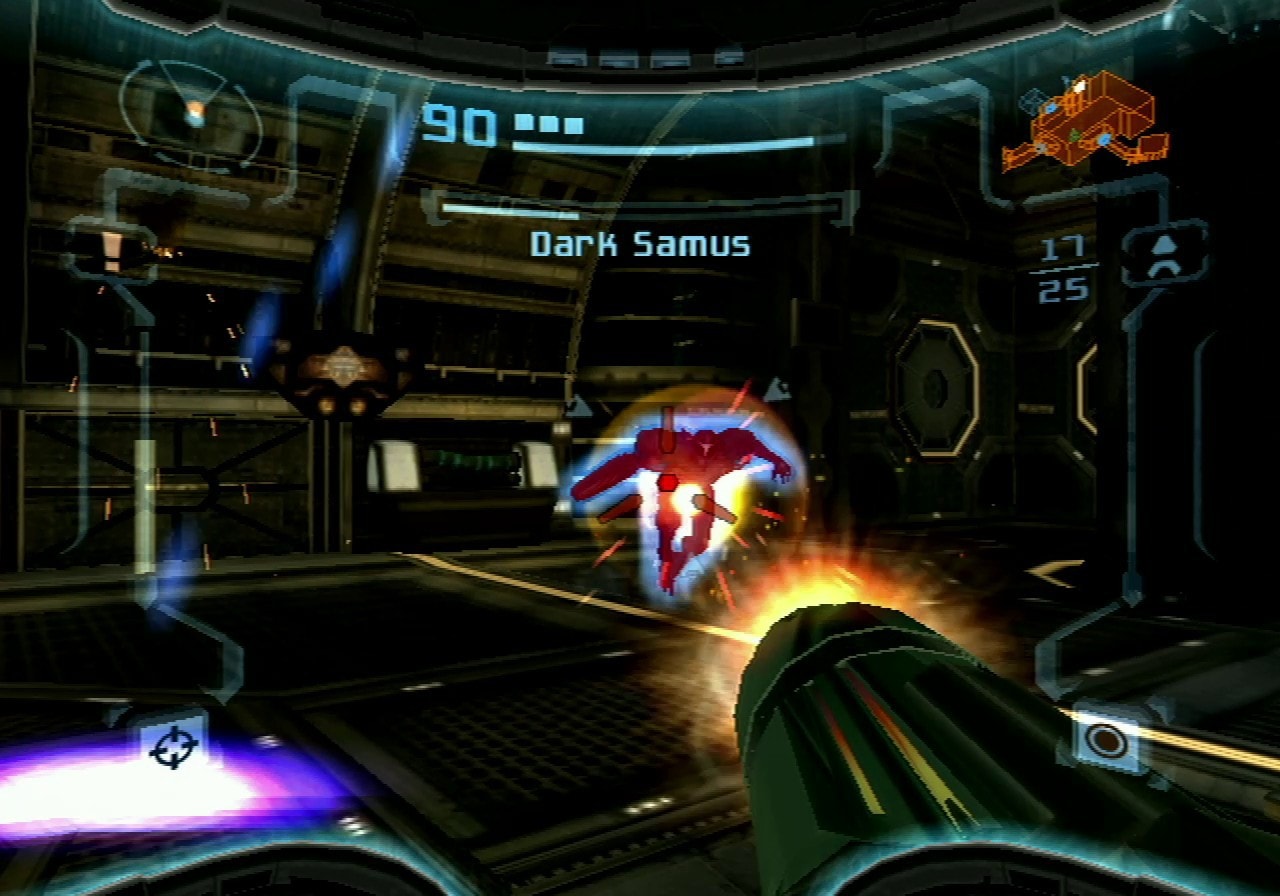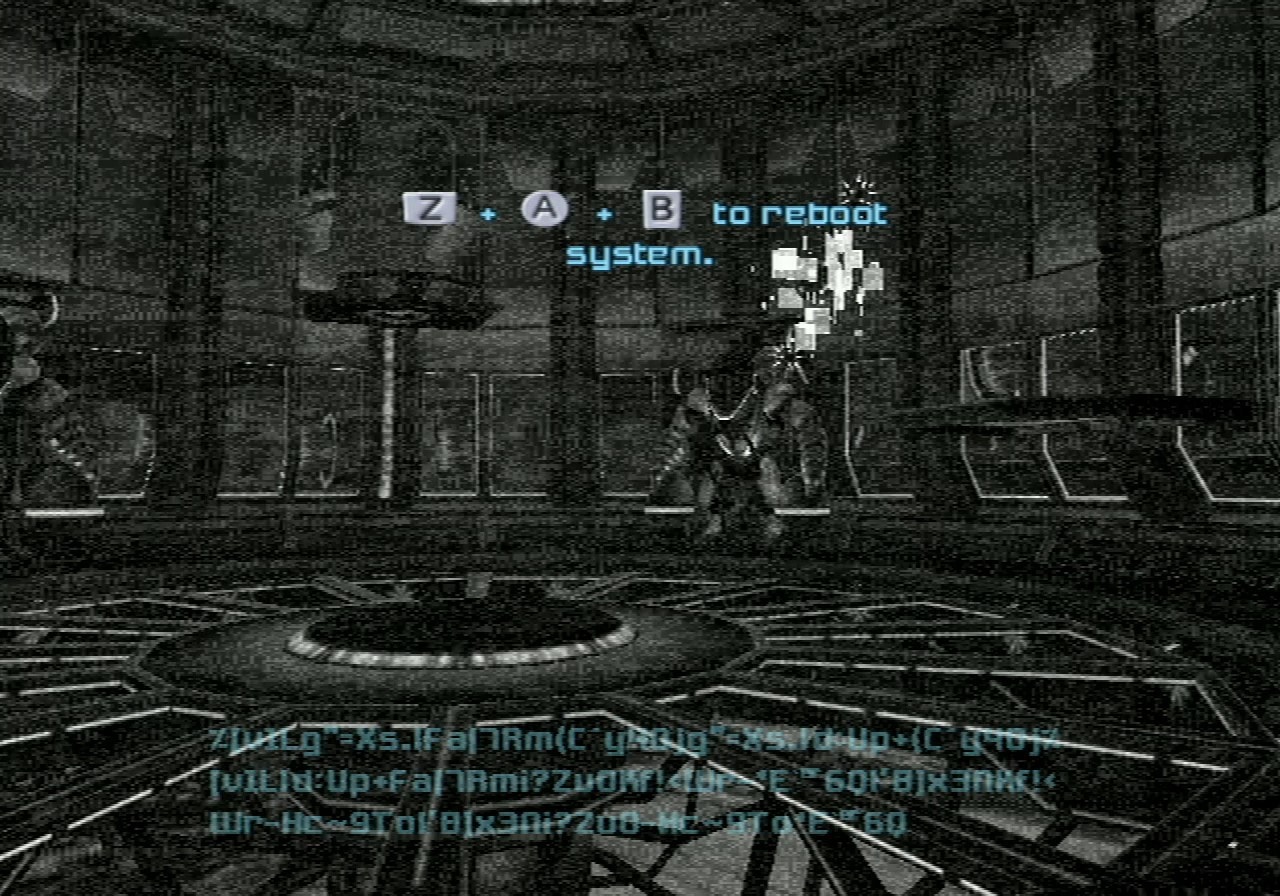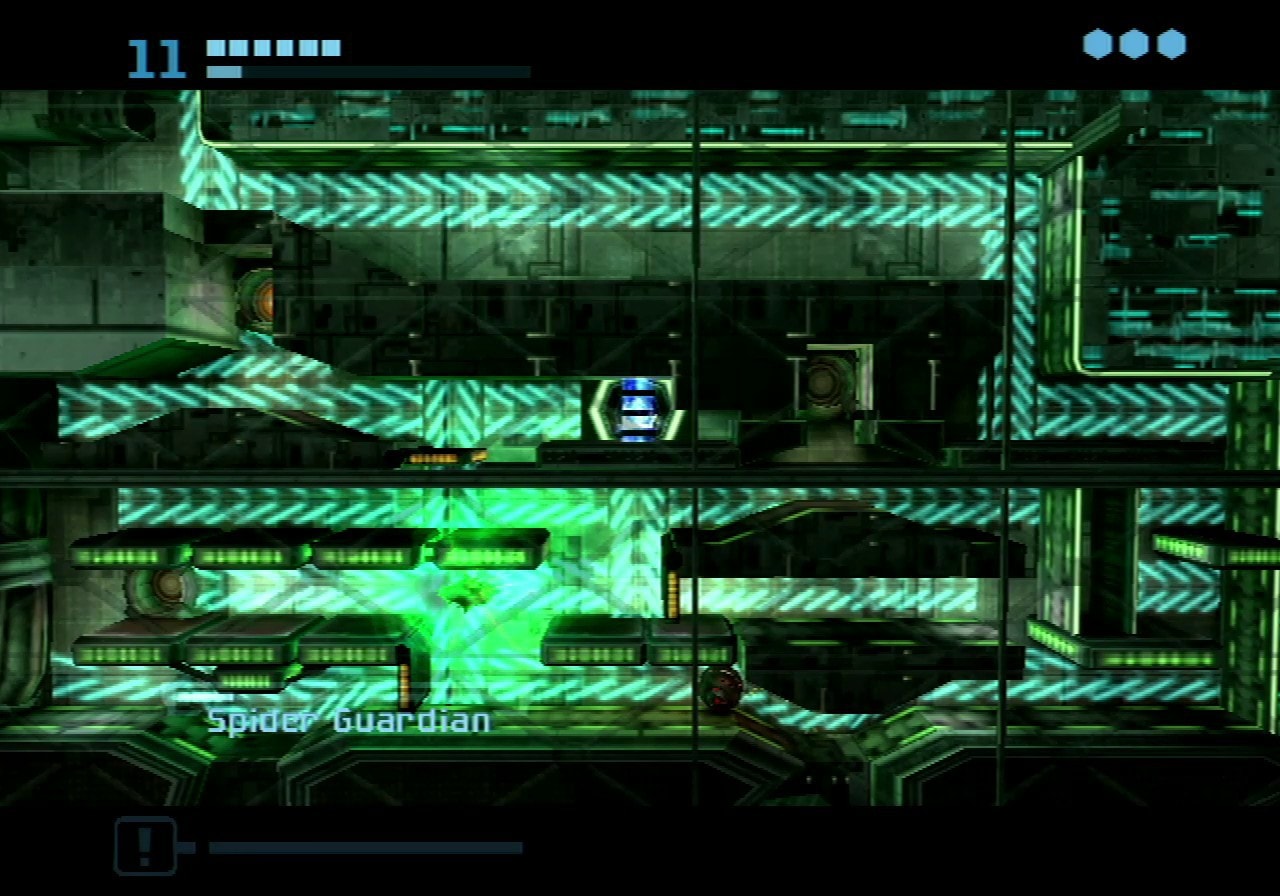The release of Metroid Prime began what could only be described as a renaissance of sorts for the series. The massive success of Retro Studios’ debut title had cemented Metroid as one of Nintendo’s big hitters, and if you want further proof, I bring you one solid fact: Over the span of 8 years following the release of Metroids Prime and Fusion in 2002, nine Metroid games were released, with six of those being related to the Prime series.
So, hopes were high when Retro Studios returned in 2004 with their follow-up – Metroid Prime 2: Echoes. Set soon after the events of Prime, Samus once again finds herself crash landing on a planet, this time she finds her way to the planet Aether while looking for the crew of a Galactic Federation Marine Core vessel that also crash lands after an altercation with Space Pirates.
Unfortunately, Aether brings a whole heap of bad news. The marines are found dead on arrival and the planet itself is split into two separate dimensions due to a Phazon meteor collision over 50 years prior to Samus’ arrival. Oh, and that creepy-looking enemy you saw in the best ending of Metroid Prime? It’s another doppelganger of Samus, and it’s on Aether, fuelled by a hunger for Phazon energy and a need to kill. Not enough danger for you? OK, fine – Those two dimensions of Aether I just mentioned? Well, one is a dark and corrupted wasteland, filled with a race of equally dark and corrupted foes called Ing, who have almost rid Aether of its guardians, the Luminoth. Early on, these nasty creatures kindly steal all of Samus’ hard-earned equipment from the previous game, leaving our hero underpowered and all alone once more.
Metroid Prime 2 – Review
With Aether now in a critical state due to the planet’s light energy mostly in the hands of the Ing on the planet’s dark dimension, it falls to our favourite bounty hunter to tool up, retrieve the light energy from each region of Dark Aether, return it to Light Aether, defeat the Ing and pop back just in time for a spot of tea, or however, Samus celebrates a successful mission. Where previously Samus was charged with picking up Chozo Artifacts to progress her mission, in Echoes, the chosen MacGuffin are keys. Each dark area of Aether is home to a temple that leads to the Energy Controller containing light energy that needs to be retrieved and unfortunately, those temples are locked and require, you guessed it, keys to get in. Get three keys, enter the temple, beat whatever nasty boss is in the way and not only will you get a useful upgrade for Samus, but you’ll also get access to the Energy Controller, containing the energy which you’ll need to bring back to Light Aether, before repeating the whole shebang a couple more times.
Aether consists of five distinct areas, split into their Light and Dark sides. The Temple Grounds acts as a hub world between the four other areas, with its dark side being the Sky Temple Grounds. The Great Temple is the central point of the story, where Samus meets U-Mos, the last of the Luminoth and the only friendly face you’ll see in the entire game. The Agon Wastes and the Torvus Bog are joined by their dark variants, the imaginatively named Dark Agon Wastes and Dark Torvus Bog. Then, Samus encounters the Luminoth’s high-tech Sanctuary Fortress and Ing Hive before finally going to the Great Temple’s dark alternate, the Sky Temple, to face the worst the Ing has to offer.
Dark Aether is a notably more dangerous world, due to the fact that merely being exposed to its atmosphere causes damage to Samus. Luckily, someone has kindly left a load of crystals that project spheres of light that provide respite from the ouchy pain of this dark world. Additionally, there are also some beacons that can be shot to temporarily create these bubbles of sanctuary – Just don’t stay there too long or they’ll soon disappear.
But how do you traverse between these two different environments? Well, it’s as simple as finding portals littered across the game world. OK, it’s not quite as simple – These portals need a little bit of a push to open, either by scanning a Portal Generator or by energising dormant portals using Prime 2’s brand new weapons.
While Samus does start with her traditional power beam, early on she will pick up both a Light Beam and a Dark Beam. The Dark Beam fires bursts of dark energy, which are powerful enough to stun some enemies, although the slow speed of the beam makes it easy for most enemies to dodge so it’s better suited at close range. Its more utilitarian uses include opening dark door hatches, energising light portals, activating light-coloured crystals to interact with lifts and other devices, and can also nullify the light-projecting properties of crystals and beacons. Meanwhile, the Light Beam makes short work of the enemies in Dark Aether but is also useful for opening white door hatches and dark portals, activating dark-coloured crystals and also increase the light projections of crystals and beacons in Dark Aether. Late in the game, Samus also gains access to the Annihilator Beam, which is the best of both worlds, can open grey doors, massively increase the effectiveness of crystals and beacons, causing them to damage some enemies, and can energise both portal types, amongst the uses. If that’s not all, Annihilator shots will also home in on targets, making short work of foes.
These three beams have finite ammunition, split into Dark and Light types respectively, with the Annihilator depleting both types at once. Whilst ammo can be found occasionally within destructible crates or other containers, it’s more common to obtain Light ammo by defeating enemies with the Dark Beam, and vice versa. Eventually, Samus encounters charge moves for all three beams, which deplete five units of ammo for each shot, and even later on she can even find more powerful charge combo beams which use even a whopping 30 units of beam ammo, and five missiles. Thankfully, there are multiple Beam Ammo expansion upgrades that can be found to increase the maximum ammo to 250 units for each type. Make no mistake, you will need them.
Which of course, brings me onto our hero’s trusty Missile Launcher. As in the original Prime, Missiles are finite but the maximum total can be increased to 255 by finding Missile Expansions. The Super Missiles also return when found, depleting 5 missiles per shot. New for Prime 2 is the Seeker Missile upgrade, which can be used to fire up to five missiles at once, either at one or multiple targets. This brand new upgrade is not only useful for tackling singular enemies quickly but certain creatures can only be killed when multiple weak points are hit at once. Plus, brand new purple hatch doors need to be opened by targeting 5 purple circles around the doorway and firing Seeker Missiles at all five points at once.
Already, you can see there’s a whole heap more going on with this sequel. If you liked the original Metroid Prime, then rest assured that Echoes is all of that and much more. If you felt like the original game’s bosses were underwhelming and infrequent – Echoes fixes that, with a whole new batch of baddies to come up against, and a lot more variety in how you defeat them, too. On that note, how do more puzzles sound? Good, because Echoes has you covered with bucketloads of puzzles that utilise all of Samus’ abilities old and new to make your brain dribble out of your earholes. Even the Morph Ball gets much more fun and interesting gameplay moments, this time around. There’s more of an overt story this time too, which is of course supplemented by the various Lore scans that fill in a lot of the blanks – Although admittedly the Luminoth vs Ing narrative isn’t a terribly captivating one and ultimately takes a backseat to the emergence of Dark Samus and reemergence of Phazon.
Speaking of scans – The scan system has been slightly overhauled to make things easier. Rather than looking for an icon that appears when using the Scan Visor to identify what items can be scanned; now the Visor highlights entire items in various colours. Red for mission-critical objects that are yet to be scanned, Blue for non-critical and unscanned enemies, and green when an object type has been scanned. This is truly a welcome function that helps players looking for all of the Logbook scans quickly identify what needs to be scanned, and players who just want to scan the necessary things can just scan red-coloured items. Unfortunately, those who cursed the missable scans in the original Prime will be dismayed to learn that there are even more missable scans in Echoes (double the amount, in fact) – An absolute nightmare if you’re going for 100% scans. Many bosses even need to be scanned multiple times, adding to the frustration. If you’re playing the original Gamecube version and finish the game without scanning everything, you are out of luck and will have to play the game from the beginning and get everything next time. At least with the Wii’s Metroid Prime Trilogy version, the game remembers scans for subsequent playthroughs, so hopefully, you didn’t miss a scan too late in the game.
There are a few other bugbears I have with Echoes. For a start, Aether is a boring place. With the dual dimension mechanic in place ala The Legend of Zelda: A Link To The Past, there’s a lot of scope to really differentiate the two dimensions, but in reality, the environment design is so bland and lifeless in Echoes, if I wasn’t surrounded in purple-hued darkness, I would honestly forget I was in Dark Aether at times. Everything is grey, brown, purple and utterly dull with little to make any of the areas stand out – Considering the variety of areas in the original Metroid Prime, Echoes is really crying out for a Phendrana Drifts of its very own, but it never really gets there. Thankfully, Retro Studios did at least improve upon one aspect of their world design – The areas are interlinked quite well, ensuring that backtracking is never too much of a chore. That’s quite important when you realise the number of items, upgrades and logbook scans to be found throughout Aether.
You’ll also encounter a lot of reusing of assets from the prior title, and it’s not entirely subtle either. Granted, you’ll encounter quite a few enemies from previous games, especially a whole heap of Space Pirates – No problem there. But when you encounter what was known as Pulse Bombu and Scatter Bombu in Prime, only this time they’ve somehow been renamed to “Harmony Class Drone” and “Diligence Class Drone”, even though they’re the exact same enemy and behave the very same way; it feels a little silly. Thankfully, there are plenty of new enemies around the place, and they’re much smarter and deadlier than they were in Prime. In fact, the original Gamecube version was known for being a particularly tricky game, something the Wii’s Metroid Prime Trilogy version fixed a little. The new enemies are great – I particularly like these Rezbit enemies in the Sanctuary Fortress, that are able to infect Samus’ suit, requiring the player to manually reboot it. Meanwhile, tackling enemies in Dark Aether becomes a much trickier proposition when you figure in the fact that unless you’re standing in the light of a beacon or crystal, you’re constantly losing health – So while you need to keep moving when fighting enemies, you also need to be very aware of your surroundings. It’s an added layer on top of the already exciting combat, that keeps things a little interesting. Of course, the damage Dark Aether does is reduced once you find the Dark Suit and later completely harmless once the Light Suit is found.
Metroid Prime 2: Echoes follows the irritatingly tropey “dark and grim” trend that many a game took in the mid-2000’s, especially when it came to sequels. The early moments of the game feature a lot of dead bodies and a lot of bleakness, while the game is constantly bludgeoning you over the head with how dark and oppressive everything is. As a result, I don’t think Echoes has the impact that the original Prime does. Combined with the drab environments, the majority of the game doesn’t really stick in the mind – I’m writing this review merely days after playing through the whole thing to 100% completion, and if I didn’t have my entire playthrough captured and right in front of me, there’s a lot I’d be forgetting here.
Yet, it’s how Echoes plays that makes it such a compelling Metroid game. Aether might not be as enjoyable to explore as Tallon IV, but the embellishments and improvements made to every gameplay aspect ensure that you’ll be gripped throughout. The attention to detail is still there. The controls still work excellently no matter if you’re using the original Gamecube scheme or the Wii’s pointer-based controls. Combat is still methodical and thrilling, and the myriad of boss battles really help bring this out. The hint system returns, although it does seem to give you a lot longer time to get lost before telling you where to go – I only encountered the Hint system while I was mopping up items and scans during the later stages of the game – Otherwise, I hardly encountered it. In short, everything you loved about Prime is here and present, if not vastly improved for the most part. And I haven’t even mentioned the new visors.
Replacing the Thermal and X-Ray visors of old is the Dark Visor, which is used to find invisible items, objects, platforms and enemies. It’s especially handy when battling enemies that have stealth cloaking, such as Space Pirate Commandos – Enemies that pop up way too much in the latter stages of the game. The other new addition, the Echo Visor, is used to see soundwaves around you, echolocation style. It can be cleverly used to open doors that have sonic locks, by seeing the soundwaves bouncing between a door and its locks, with the locks having to be destroyed. Some of these doors require a series of tones to be played, by finding and shooting locks in the correct order. Additionally, it’s also used in a few combat situations too, in situations where enemies would normally overload the Dark Visor. Both of these new visors differentiate themselves enough from the X-Ray and Thermal Visors of Prime and are used in far more interesting ways, too.
Much like Prime, Echoes absolutely holds reverence to previous Metroid titles, especially Super Metroid. The excellent soundtrack contains some great new tracks, but of course a few returning pieces from Super Metroid. However, the return of the Wall Jump and Screw Attack abilities are fun new inclusions that while aren’t utilised enough, are undoubtedly cool to use where possible.
As I said, there are a lot of welcome additions that add even more depth. The same can’t quite be said for another trope of mid-2000’s gaming: The unfathomable inclusion of a four-player local multiplayer mode, which is a nice idea, but ultimately not something I think many people would be flooding to the game for. Players can do battle amongst themselves, in a variety of locales, with more unlocked as progress is furthered in Single Player mode. I honestly didn’t spend any time with this mode, and it’s probably not why you’re here, so I won’t say any more about that.
As for other additional features, you can a few galleries by reaching a few milestones with logbook and item completions, plus finishing the game. If you’re playing the Metroid Prime Trilogy version, you can once again get tokens for defeating bosses and finding keys, to purchase these additional galleries. Sadly, as mentioned in my Zero Mission review, despite it being planned – There’s no linkup function with any of the Game Boy Advance Metroid titles.
All in all, Metroid Prime 2: Echoes is a flawed, yet incredibly well put-together follow-up, that will please anyone that enjoyed the original Prime. I can just about forgive the bland world of Aether, especially when the rest of the game is so damn good. It possibly outstays its welcome a little near the end due to the player being asked to backtrack through every location to find nine keys before they can reach the final battle, but everything leading up to that point is absolutely great. This is Retro Studios proving that they know Metroid very well, and making it very clear that Prime was no fluke.
Next week, not so much of a review, but an intermission of sorts. A new handheld system comes from Nintendo, and surprisingly, the packed-in cartridge is an early version of a brand new Metroid title – Come back next week for a look at Metroid Prime Hunters: First Hunt for Nintendo DS.
